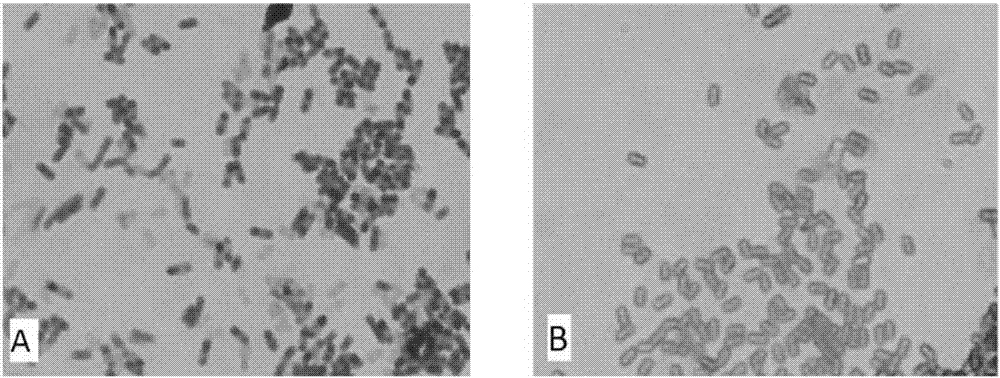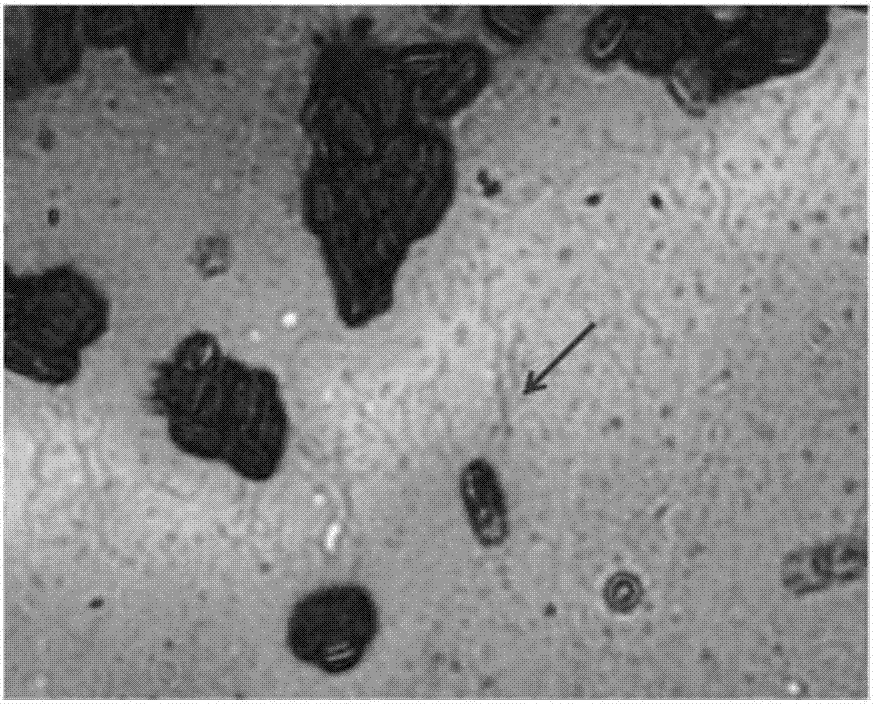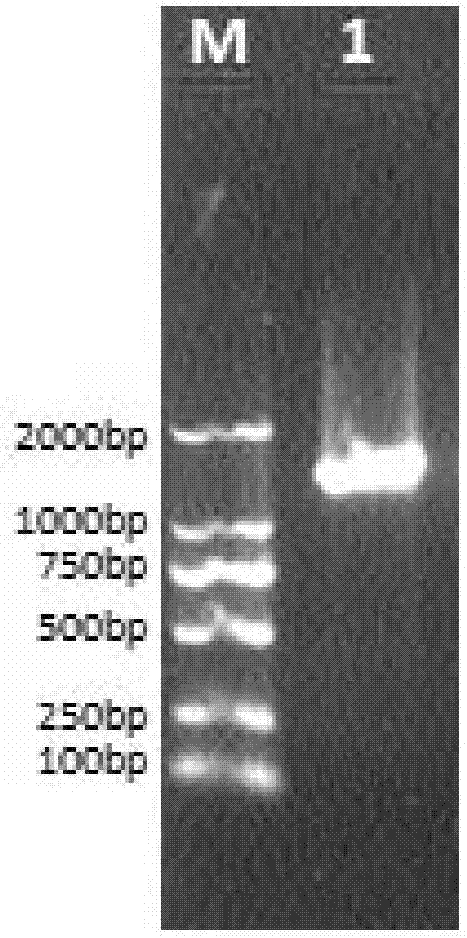Bacillus amyloliquefaciens for biocontrol and application thereof
A technology for dissolving amyloid spores and biocontrol agents, which can be used in applications, bacteria, biocides, etc., can solve problems such as differences in biocontrol capabilities, and achieve the effect of wide antibacterial spectrum.
- Summary
- Abstract
- Description
- Claims
- Application Information
AI Technical Summary
Problems solved by technology
Method used
Image
Examples
Embodiment 1
[0023] Example 1. Isolation and identification of antagonistic bacteria X1-b
[0024] 1. Isolation of strain X1-b
[0025] The antagonistic bacteria X1-b strain was isolated from the rhizosphere soil of peach trees in Pinggu District, Beijing.
[0026] Separation method: soil solution gradient dilution method
[0027] Weigh 0.5g of peach tree rhizosphere soil and dissolve it in 50mL of sterilized water, dilute it in gradient with sterilized water, and finally apply it on NA (beef extract peptone) medium. Incubate at 28°C for 2d (days).
[0028] The colonies cultivated by the above-mentioned test were picked with a sterilized toothpick and placed on the PDA medium containing the target pathogenic fungus—apple bark rot fungus (Valsa mali). Incubate at 25°C for 3-5 days, and check the width of the inhibition zone of each bacterium against pathogenic fungi. Results The biocontrol bacteria with strong activity of the apple bark rot pathogen were named strain X1-b.
[0029] 2. ...
Embodiment 2
[0122] Embodiment 2. Determination of antibacterial activity of Bacillus amyloliquefaciens (Bacillus amyloliquefaciens) X1-b CGMCC No.12742
[0123] The target plant pathogenic fungi and pathogenic bacteria were provided by the Plant Pathology Laboratory of Beijing Agricultural College (see Table 2, Table 3), and the antagonistic activity of the strain Bacillus amyloliquefaciens X1-b on the above pathogenic fungi and bacteria were respectively determined. Simultaneously, with bacillus thuringiensis (B.thuringiensis) BT (provided by laboratory of plant disease biocontrol of China Agricultural University), another strain bacillus subtilis (B.subtilis) X1-a that the inventor of the present invention separates, and not The culture of any antagonistic bacteria was taken as the control, and each treatment was repeated 3 times to observe the inhibition of the growth of different pathogenic bacteria by the bacteria, and measure the width of the inhibition zone. The pathogenic fungi an...
Embodiment 3
[0146] Embodiment 3, Bacillus amyloliquefaciens (Bacillus amyloliquefaciens) X1-b CGMCC No.12742 is to the control test of cucumber cotton rot (Pythium aphanidermatum) disease and citrus penicillium (penicillium italicum) disease
[0147] 1. Preparation of Pathogen Activation and Biocontrol Fermentation Broth
[0148] Fungal activation: the preserved Penicillium italicum PI-1 was picked up with a sterilized inoculation needle and transferred to a new PDA medium plate, cultured in a constant temperature incubator at 25°C for 3-5 days, and set aside.
[0149] Bacillus amyloliquefaciens (Bacillus amyloliquefaciens) X1-b CGMCC No.12742 biocontrol liquid preparation: Pick a single colony of newly activated X1-b and inoculate it in a 300mL Erlenmeyer flask containing 30mL liquid NA medium, at 28°C, 150r / min, shake culture for 48h, which is the fermented bacterial liquid for biocontrol. Sterilized fermentation broth: directly sterilize the cultured fermentation broth at 121°C for 2...
PUM
 Login to View More
Login to View More Abstract
Description
Claims
Application Information
 Login to View More
Login to View More - R&D
- Intellectual Property
- Life Sciences
- Materials
- Tech Scout
- Unparalleled Data Quality
- Higher Quality Content
- 60% Fewer Hallucinations
Browse by: Latest US Patents, China's latest patents, Technical Efficacy Thesaurus, Application Domain, Technology Topic, Popular Technical Reports.
© 2025 PatSnap. All rights reserved.Legal|Privacy policy|Modern Slavery Act Transparency Statement|Sitemap|About US| Contact US: help@patsnap.com



